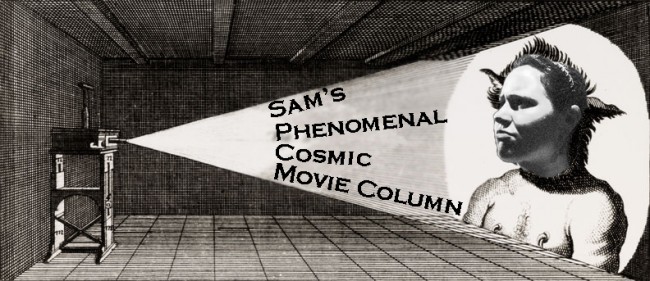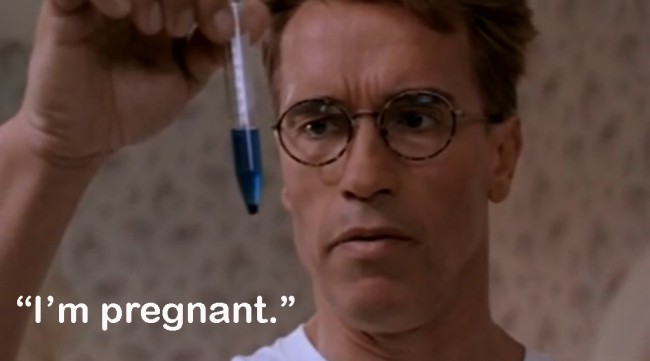History of Film: Magic Lanterns

The history of film tends to be dominated by the 1920s, 30s, and 40s. We talk about the transition to talkies, the Hays code, the introduction of color, and of course the birth of future movie supergod Arnold Schwarzenegger in July of 1947 (there was thunder and lightning and candy bullets rained from the sky).
If we want to go further back we discuss Edison and the Kinetograph, Lumiere and the Cinematographe, and the many accompanying film clips of moving trains or people kissing (yes the entire history of motion pictures has been building up to Cinemax).
Well! I wouldn’t be Sam if I was willing to stop there. No, if I’m tracking the public fascination with moving pictures, then I’m going back to the magic lantern, a device popular throughout the nineteenth century, but invented as early as 1659 in the Netherlands. I could go back as far as shadow puppets cast on cave walls by firelight, but one step at a time people.
A magic lantern is essentially an old-school slide projector. It is a box with a light source (a candle or oil lamp in the early days) focused and projected via mirrors through a small transparent painting. By quickly shuffling through a series of images, a rudimentary illusion of movement is created.
Classic episodes include… A boy jumping rope! Animals running! A rat crawling into a snoring man’s mouth! And all of it accompanied by a musical soundtrack or narration by the projectionist.
The devices became quite popular by the end of the nineteenth century. Traveling lanternists called Galantee showmen or savoyards would exchange a picture show for some food and a room to sleep in at night. Magicians took advantage of the technology to enhance their special effects, causing inanimate objects to exhibit movement, or conjuring up specters for the audience’s frightened titillation. The traveling showmen gradually gave way to “professors” operating in enormous auditoriums with multiple large-scale projectors and elaborate effects.
Shows that catered to the occult were called Phantasmagoria shows. Showmen projected ghoulish images of demons, ghosts, and Satan himself to terrify their audiences. The projector could be concealed behind a translucent screen, and the images made to travel around the walls or hover on clouds of smoke.
It still has an audience today. The Magic Lantern Society has members in more than thirty countries, and holds international conventions every four years. There are museums scattered across Europe, and shows are still put on for the public around the world. You could make a magic lantern yourself if you wanted to.
I find this topic delightful, because for all the technological advancements we’ve achieved in motion pictures since the nineteenth century, we are still responding to the same elements of entertainment. Light and sound and startlement! Give me humor and funny sound effects and big kabooms, or scare the hell out of me with some unearthly monster. We’ve simply grown more sophisticated as an audience. We can spot the strings and zippers and CGI with critical eyes, and so we laugh and applaud all the more when we’ve successfully been tricked.
Because apparently I’m still a baby who bursts into laughter when somebody claps his or her hands in front of my face. Oh, you scared me, how fantastic! Every new advance is revolutionary and amazing and the most lifelike representation imaginable…though it’ll be considered cheesy and old hat within a few years. We haven’t given up our love of magic lanterns, it’s just that their frames-per-second have dramatically increased.
And the entire history of moving pictures was just a precursor to this…

NEXT WEEK ON THE PHENOMENAL COSMIC MOVIE COLUMN:
My very first VHS screener! Oh, you’re going to love this.
